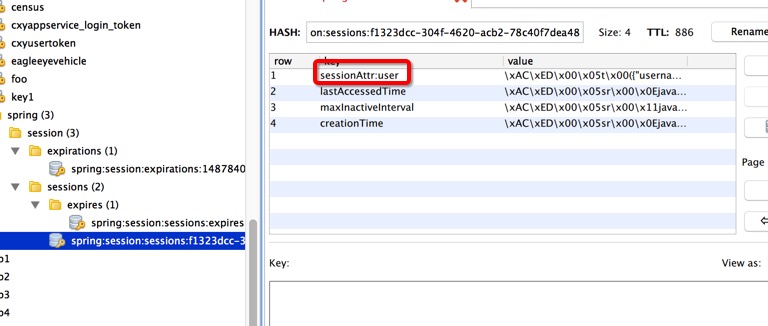1、添加依赖
|
1
2
3
4
5
6
7
8
9
10
|
<dependency> <groupId>org.springframework.session</groupId> <artifactId>spring-session-data-redis</artifactId> <version>1.2.1.RELEASE</version></dependency><dependency> <groupId>redis.clients</groupId> <artifactId>jedis</artifactId> <version>2.8.1</version></dependency> |
2、配置
spring-mvc.xml:
|
1
2
3
4
5
6
7
8
9
10
11
12
13
14
15
16
17
18
19
|
<bean id="redisHttpSessionConfiguration" class="org.springframework.session.data.redis.config.annotation.web.http.RedisHttpSessionConfiguration"> <property name="maxInactiveIntervalInSeconds" value="600"/></bean><bean id="jedisPoolConfig" class="redis.clients.jedis.JedisPoolConfig"> <property name="maxTotal" value="100" /> <property name="maxIdle" value="10" /></bean><bean id="jedisConnectionFactory" class="org.springframework.data.redis.connection.jedis.JedisConnectionFactory" destroy-method="destroy"> <property name="hostName" value="${redis_hostname}"/> <property name="port" value="${redis_port}"/> <property name="password" value="${redis_pwd}" /> <property name="timeout" value="3000"/> <property name="usePool" value="true"/> <property name="poolConfig" ref="jedisPoolConfig"/></bean> |
web.xml添加拦截器:
|
1
2
3
4
5
6
7
8
|
<filter> <filter-name>springSessionRepositoryFilter</filter-name> <filter-class>org.springframework.web.filter.DelegatingFilterProxy</filter-class></filter><filter-mapping> <filter-name>springSessionRepositoryFilter</filter-name> <url-pattern>/*</url-pattern></filter-mapping> |
3、使用spring-session
只要使用标准的servlet api调用session,在底层就会通过Spring Session得到的,并且会存储到Redis或其他你所选择的数据源中。
这里是我写的一个demo:
|
1
2
3
4
5
6
7
8
9
10
11
12
13
14
15
16
17
18
19
20
21
22
23
24
25
26
27
28
|
/** * @author fengzp * @date 17/2/23下午3:19 */@Controller@RequestMapping(value = "index")public class IndexController { private final Gson gson = new GsonBuilder().setDateFormat("yyyyMMddHHmmss").create(); @RequestMapping(value = "login") public String login(HttpServletRequest request, String username){ request.getSession().setAttribute("user", gson.toJson(new User(username,"123456"))); return "login"; } @RequestMapping(value = "index") public String index(HttpServletRequest request, Model model){ User user = gson.fromJson(request.getSession().getAttribute("user").toString(), User.class); model.addAttribute("user", user); return "index"; }} |
index.jsp:
第一个tomcat
|
1
2
3
4
5
6
|
<html><body><h2>Hello World!</h2><p>${user.username}</p></body></html> |
第二个tomcat
|
1
2
3
4
5
6
|
<html><body><h2>Hello World! i am the second!</h2><p>${user.username}</p></body></html> |
测试
这里利用上一篇nginx负载配置的两个tomcat来测试。
首先访问 http://192.168.99.100/feng/index/login.htm?username=nginx 来触发生成session。
查看redis,发现session已经保存到redis。

访问 http://192.168.99.100/feng/index/index.htm 来读取session, 并刷新多次。


发现在负载的情况下读取session没问题,并且是同一个session,成功实现负载+session共享!以上就是本文的全部内容,希望对大家的学习有所帮助,也希望大家多多支持服务器之家。
原文链接:http://www.cnblogs.com/andyfengzp/p/6434287.html












